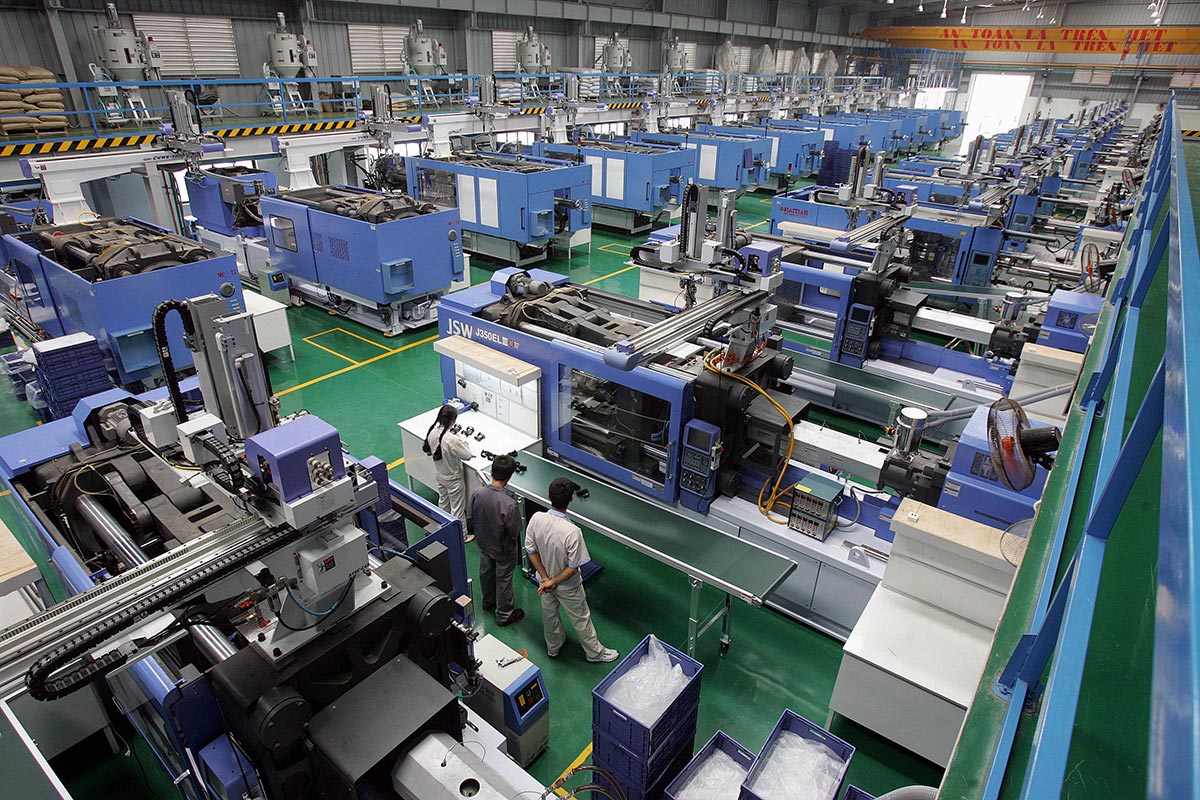The manufacturing sector has been one of the Association of Southeast Asian Nations’ (ASEAN) key economic growth drivers. Already, the region is a global manufacturing hub and is estimated to grow at a compound annual growth rate (CAGR) of 6.6 percent between 2016 to 2020.
One key factor propelling demand in this sector is a 640 million strong regionwide consumer base with a growing middle-income segment. Rising incomes which shift consumption trends have also contributed to growth in this sector. Besides that, economies in the region have low operating costs which attract businesses from larger manufacturing bases.
In recent times, China has seen rising wages and tighter regulations lead to an increase in operating costs as it shifts towards higher value manufacturing. Hence, in order to replace the role that China once played, companies are looking to the ASEAN region for lower-value production networks which have also been largely integrated into global manufacturing value chains.
ASEAN’s involvement in extra-regional trade deals has improved its standing as a global manufacturing hub. The ASEAN Economic Community (AEC) for example, envisions ASEAN as a single market and production base. Meanwhile, mega trade arrangements like the Regional Comprehensive Economic Partnership (RCEP) if successful would be a positive step towards a broader Free Trade Area of the Asia-Pacific (FTAAP) that can serve as a useful intergovernmental forum on free trade.
Hence, manufacturers in the region would be able to enjoy lower transaction costs thanks to greater economic integration and a more coordinated and liberalised policy environment. The reduction of barriers to trade and investment would also need to be complemented with a regional customs cooperation which would only help strengthen the sector and enable more seamless movement of goods and people.
Market opportunities
With a global shift towards high tech sectors, there has been a proliferation of opportunities in the automotive manufacturing industry. The automotive sector made up the fifth largest category of products being exported from the region with high export volumes of vehicles, parts, and accessories worth US$42.5 billion in 2016.
According to a recent report, the industry, valued at US$62.5 billion in 2016 is expected to grow by 23 percent to US$77 billion in 2020. This would be spurred on by an uptick in domestic demand for passenger and commercial motor vehicles at 4.2 percent CAGR and 3.9 percent CAGR, respectively, between 2016 and 2022.

Source: Oxford Economics, BMI
Moreover, ASEAN member states already have an inherent strategic advantage as an automotive production and export hub catering to the wider Asia-Pacific region. With Thailand and Indonesia leading the way, the region is positioning itself as a cost-effective production hub for new energy vehicles powered by electric and hybrid systems. There is a pressing need for manufacturers to tap into secondary industries related to parts and accessories so as to establish a competitive advantage over other manufacturers.
Besides that, growth opportunities also exist in the downstream production of refined fuels in ASEAN countries. A recent report suggested that this is driven by a widening gap between burgeoning consumption and limited local capacity. It has pointed to a serious need to boost domestic production in the coming years by opening new plants as well as upgrading existing ones to higher operating standards.
Per capita energy demand in the region still lags behind the global average, signalling a significant avenue for growth. On top of that, for ASEAN states to live up to their robust economic outlook they will have to meet domestic energy demands which could increase reliance on imported fuels and raise concerns over the economic burden of ensuring energy security.
Therefore, national governments are looking to strengthen local refining industries, ease conditions for private sector investments, as well as create a balanced playing field for both, domestic and foreign players. A well-developed refining sector will be a strong complement to petrochemical manufacturing in the region which is seeing a rise in demand thanks to ASEAN’s economic surge.
The one chink in ASEAN’s manufacturing sector armour could be the bitter trade spat between the United States (US) and China that is fast evolving into a full-blown trade war. ASEAN remains very much at the heart of transnational value chains as exporters of manufactured intermediate goods, electronic products and solar panels which could be affected due to the latest spate of tariffs slapped on by the Trump administration.
Nevertheless, as long as ASEAN countries strengthen their regional resilience, improve domestic demand and remain an attractive destination for investors from the affluent economies of the Middle East, China and Asia Pacific, it can counterweigh the effects of the trade war. Already, Chinese auto companies have articulated plans to divert exports and investment from the US to Southeast Asia, spelling a possible boost in foreign direct investment (FDI) for the region.
For now, manufacturing remains a vital sector for ASEAN’s economy. Though analysts are right to be wary of the downsides that a trade war could have on the sector, prevailing and future market opportunities will contribute to the region’s growth into the distant future.
